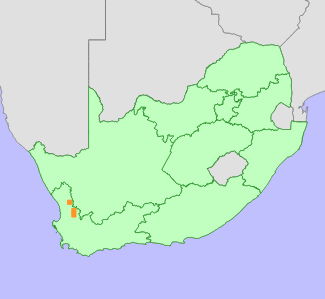|
Scientific Name | Ixia flagellaris Goldblatt & J.C.Manning |
Higher Classification | Monocotyledons |
Family | IRIDACEAE |
National Status |
Status and Criteria | Rare |
Assessment Date | 2014/04/14 |
Assessor(s) | L. von Staden |
Justification | A range-restricted species (EOO 85 km²), occurring in well-protected montane areas where it is not threatened. |
Distribution |
Endemism | South African endemic |
Provincial distribution | Western Cape |
Range | Cederberg and Koebee Mountains. |
Habitat and Ecology |
Major system | Terrestrial |
Major habitats | Cederberg Sandstone Fynbos, Bokkeveld Sandstone Fynbos |
Description | Moist sandy flats. |
Threats |
| This species' montane habitat is well-protected: it has no threats. |
Population |
This species is known from only a few records, but it occurs in rugged, remote montane wilderness areas difficult to access, and it may be more common and widespread.
|
Population trend | Stable |
Assessment History |
Taxon assessed |
Status and Criteria |
Citation/Red List version | | Ixia flagellaris Goldblatt & J.C.Manning | Rare | 2014.1 | |
Bibliography |
Goldblatt, P. and Manning, J.C. 2012. Systematics of the southern African genus Ixia (Iridaceae:Crocoideae): 4. Revision of sect. Dichone. Bothalia 42(2):87-110.
|
Citation |
| von Staden, L. 2014. Ixia flagellaris Goldblatt & J.C.Manning. National Assessment: Red List of South African Plants version 2024.1. Accessed on 2025/11/19 |
 Comment on this assessment
Comment on this assessment


